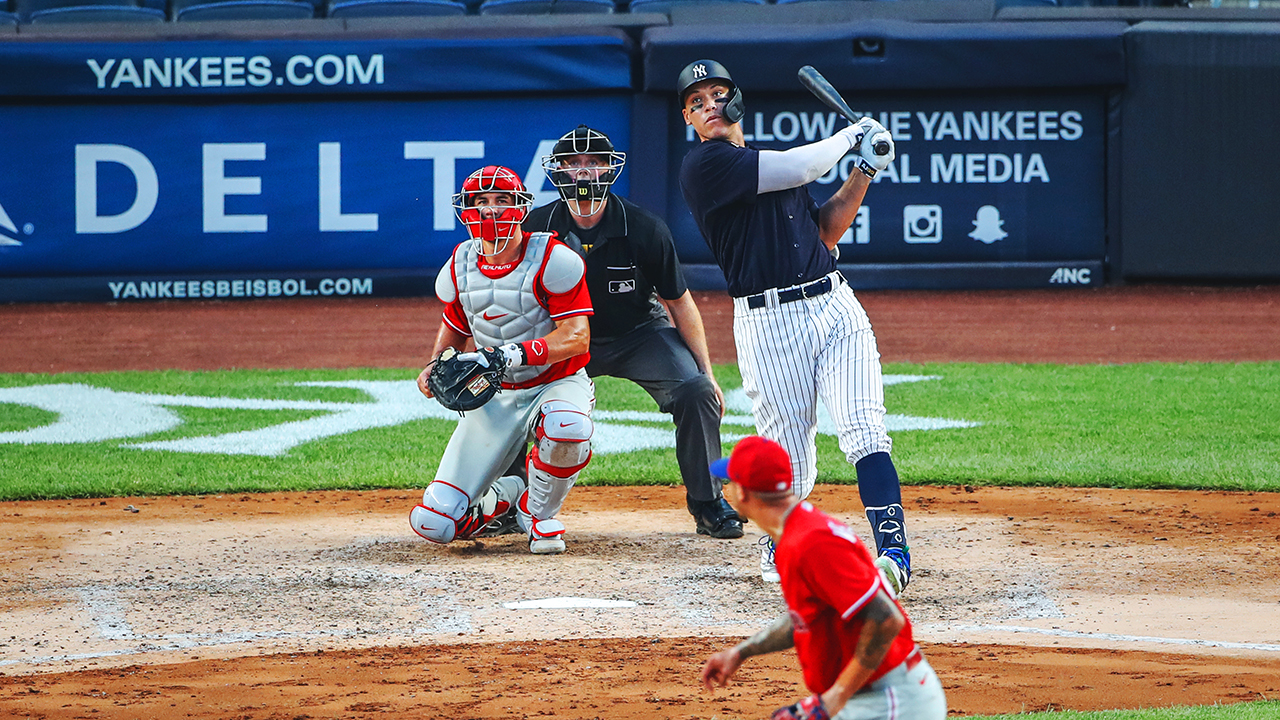With the 2020 MLB season launching tonight with marquee matchups in Washington and Los Angeles, we’ll see how MLB and its broadcast teams handle a unique challenge: drumming up enthusiasm for a fan-less experience.
If you watched any of the summer camp games, you saw how Boog Sciambi, Chipper Jones and Rick Sutcliffe struggled to maintain fan interest in a White Sox/Cubs summer camp game that had little drama; the ambiance of Wrigley Field was totally lost. To his credit, Sciambi said he was calling the game from his apartment and was unable to see all the side developments that broadcasters can access while on the air. The only time that broadcast saw any semblance of life was when Anthony Rizzo came on the air, live from the stands, and immediately started joshing with Chipper Jones, remembering how as a kid he heckled Larry from the front-row seats.
So how does MLB plan on adding some excitement to the proceedings? Most of the tech updates came on the replay side, doubling the number of replay cameras to 24 and upgrading the New York City replay hub as part of the MLB move to the Time & Life Building. But the game experience should be enhanced by upgrades to ballpark cameras, per AP:
Also debuting this week is a second-generation Statcast system that shifts from TrackMan and Doppler radar to Hawk-Eye and an array of 12 cameras whose data will be stored on Google Cloud to create graphics for scoreboards and broadcasts. Five of the cameras are targeted for pitch tracking, four behind the plate and one in center field, and seven are used to track players. Each camera is 4K resolution and typically tracks at a rate of 100 frames per second, though they can be sped to as fast as 500 frames per second.
“We’re trying to set a foundation here with this new deployment that is a foundation that we can innovate on for the next five years as technology continues to progress,” said Jason Gaedtke, MLB’s chief technology officer.
Also on tap: new tools that allow fan reaction to games and plays be directly reflected in the game-day audio. We will see fan noise piped into ballparks, which isn’t as intrusive as one would think (it sort of becomes a steady background after five minutes or so of viewing), and the volume and tenor of fan noise will be guided by fan reaction on the Gameday App, MLB.com or social media. From ESPN:
“We actually aren’t supplying the boo sounds at all, so it solves a problem there,” said Chris Marinak, executive vice president of strategy, technology and innovation for MLB. “We’re only supplying the teams with background noise, different types of cheering and anticipation sounds, but there is no actual booing that we’re providing. In the event that there is a lot of booing, it would just be ratcheted down to be very quiet.”
With the fan-interactive features, those logged in will be able to see what percentage of those watching root for certain teams while seeing the three reactions icons pop up on screen, similar to the hearts on an Instagram Live video.
“It’s not the same as sitting next to your best friends in the stands, but to create a sense of fan community and a sense of engagement and their favorite teams, it will help reinforce what will be a unique season,” Marinak said.
Down the line will come the ability for fans to engage with familiar between-innings promos at the ballpark, like the Brewers’ sausage races or the Twins’ Twingo.
But these were changes already in the works. It doesn’t look like MLB has taken any special or extraordinary steps to creating new fan experiences for the 2020 viewing experience, unlike MLS or the NBA, which launched virtual grandstands to allow fans to participate in a game via Zoom. Perhaps we’ll see some new features launched as the season starts.
Photo of Aaron Judge homering in the Yankees/Phillies Summer Camp game courtesy New York Yankees.
This article first appeared in the weekly Ballpark Digest newsletter. Are you a subscriber? It’s free, and you’ll see features like this before they appear on the Web. Go here to subscribe to the Ballpark Digest newsletter.

